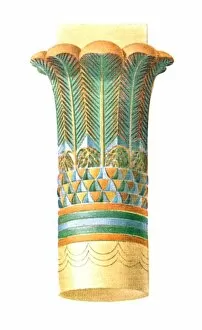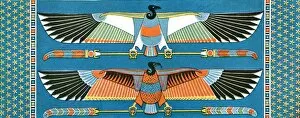Emile Prisse Dav Collection
"Exploring the Ancient Treasures of Emile Prisse d'Avennes
All Professionally Made to Order for Quick Shipping
"Exploring the Ancient Treasures of Emile Prisse d'Avennes: A Glimpse into Egypt's Rich History" Step back in time and immerse yourself in the captivating world of Emile Prisse d'Avennes, as we unveil a collection of extraordinary artifacts discovered during his expeditions. This column from Luxor, Egypt (1928) transports us to the majestic ruins that once stood as a testament to Pharaonic glory. The Ptolemaic capital in Edfu, Egypt (1928) reveals intricate carvings that depict stories of gods and pharaohs, while the column from Karnak, Egypt (1928) showcases the grandeur of ancient Egyptian architecture. As we journey further into this mesmerizing era, we encounter a bouquet capital from Thebes, Egypt (1928), adorned with delicate floral motifs that symbolize life and rebirth. The Ptolemaic-Roman capital from Philae, Egypt (1928), offers insights into the fusion of cultures during this period. Marvel at another stunning capital from Karnak, Egypt (1928), displaying remarkable craftsmanship and attention to detail. Delve deeper into Philae's history with yet another captivating capital showcasing its unique blend of architectural styles. The tomb paintings provide a glimpse into daily life through their depiction of ceiling paintings found in Aichesi's tomb at Thebes, Egypt (1928). These vibrant scenes transport us to an era filled with opulence and artistic expression. Witnessing vulture ceiling decorations at Philae Temple (1928) reminds us of their significance as protectors and symbols for royalty. Lastly, the detailed ceiling painting found within Bekenranef's tomb at Sakkara, Egypt ( 1929 )offers an intimate portrayal of religious rituals and beliefs held dear by ancient Egyptians. Emile Prisse d'Avennes' discoveries offer us an invaluable opportunity to connect with the past, unraveling the mysteries of Egypt's rich history.










